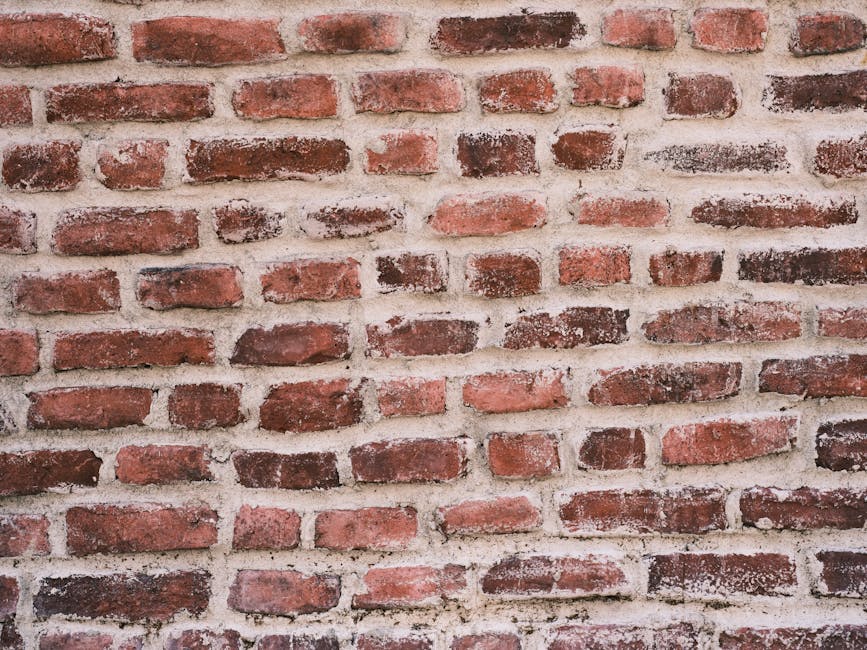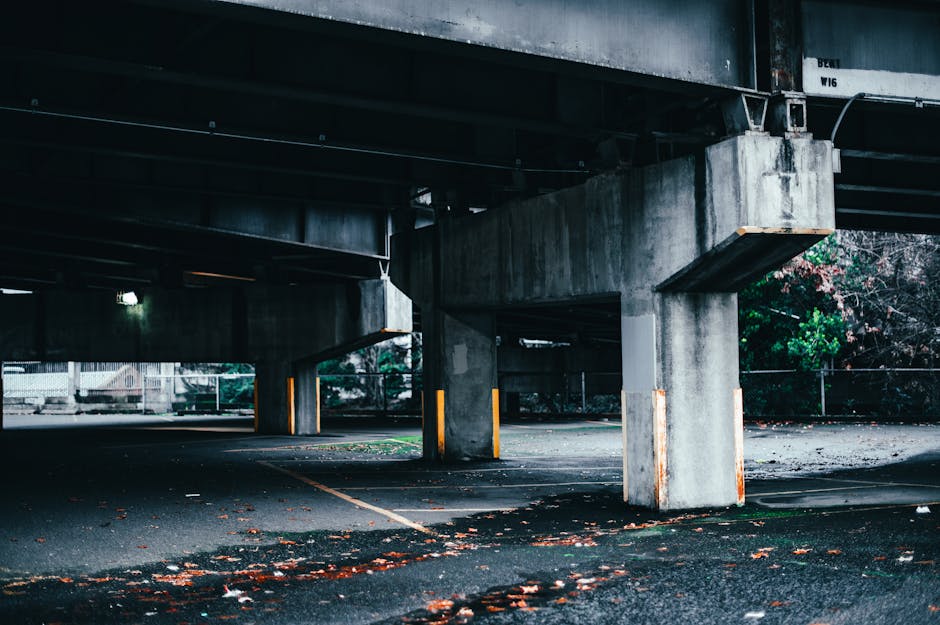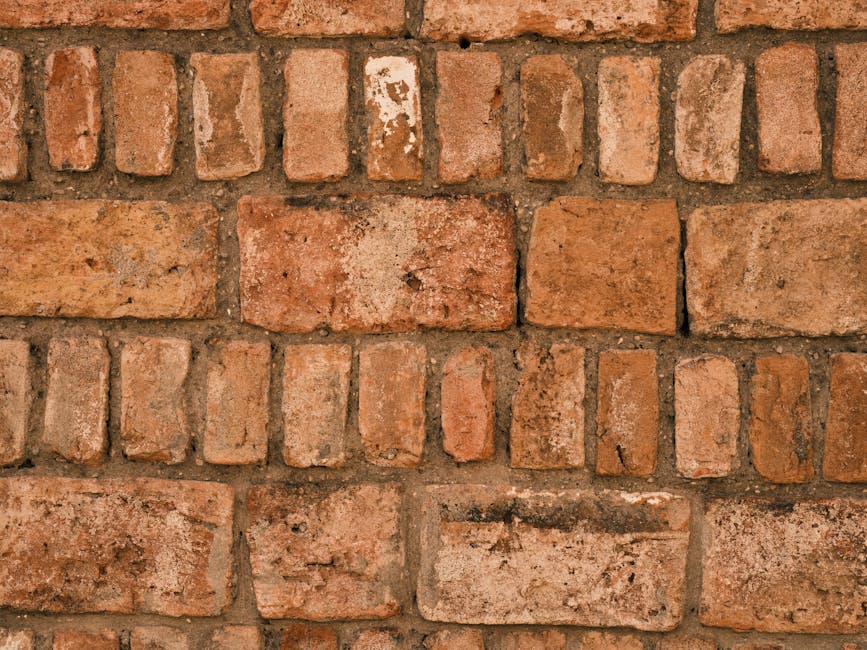Average lifetime of a concrete block foundation

There are two main types of foundations that hold walls up: cement ones and wooden felted ones.
The cement blocks have been around so long that we usually think of them as standard, which they were formed in Europe in the 19th century.
But new building techniques are constantly being developed, making these bricks very modern. These include polystyrene insulation, sand to reduce friction, and plastic wrap at the top of the brick to protect it from water.
Reducing friction is basically doing everything you can not to absorb any energy when your body’s instinct tells you that this would be the best thing to do!
That includes wearing thicker socks or taking off those ugly rubber shoes you bought last year.
The thickness of the foam pad under the wall affects its ability to resist forces. A thicker floor joist helps keep the wall properly aligned with current living standards.
Major components of a concrete block foundation

The average lifespan of a well-built concrete block foundation is between 50 and 100 years.
However, this depends on various factors such as quality of construction, location, environmental conditions, etc.
Furthermore, block foundations may also suffer from damage due to age or improper maintenance (such as not keeping soil tightly packed around the base), leading to part failure.
Repairing concrete block foundations

There are many ways to repair damage caused by sunken foundations, allowing your investment in foundation repairs to extend its life.
When it was time to replace the plumbing pipes below your foundation, you wanted to make sure that everything was done properly. It’s not enough just to pour more concrete over the top of the old pipe system and brace it with wood. You need to fix the holes where the new pipe will go, so that they no longer leak or provide an access point for bacteria and other contaminants.
There are two basic approaches you can take when repairing leaks from existing piping under your foundation. You can either excavate to expose the damaged pipe and then reinforce the area using large bricks or metal grates. Then you can replace the pipe as usual and re-level the surface.
The second approach is to create an underground reservoir inside of any sink hole formed by shifting soil underneath the foundation. This internal tank forms by digging down around the leaking spot, replacing the water table beneath it with cement, and then pouring fiberglass resin into the gap between the building and the exterior wall.
Only do this if the roof dips significantly near the place where the pipe is located, because there is less space for fluid accumulation here than where the plumbing meets the floor. Otherwise the risk of damaging the ceiling drips considerably greater.
Proper maintenance of your concrete block foundation

One aspect of keeping your home safe is making sure that any existing damage from water or flooding are repaired before other areas begin to fail.
You also want to make sure you have enough strength inyourfoundationto handle any expected load, such as a slab failing if it weighs too much.
Next, you want to check how well insulating factor s affect your structure. Make sure you know the ratings for all major materials used in construction; then consult building codes and research online to learn more.
Some things you can do to reduce insulation loss is to install thicker windows and doors or use cotton fabrics instead, which is far less efficient. Also consider encapsulation, where liquid vapor barrier is installed around the perimeter of the house to prevent air from moving through the wall.
Last, but not least, keep abreast of current weather trends and report any severe storms while they’re still happening. Give yourself some time after a storm to inspect your property.
If you find problems, fix them immediately or call in professionals to ensure the area is safe.
Reasons why your concrete block foundation may need repair

There are some normal reasons that you might want to consider having one (or more) of your stone foundations repaired.
The first is if there’s a significant shift in the level of the structure relative to the ground. For example, if you have a wind-driven erosion of your soil pile associated with your residence due to weather conditions or activities such as digging or driving frequently, this can act to stress your foundation area.
It’s also worth mentioning here that for some people, their children particularly, there is a risk related to raised levels of adrenaline in the bloodstream when they see earth moves occurring.
So for these reason alone, it’s probably best to watch out for any changes in the stability of the structure over time.
Also check your home at specific intervals during rainy seasons and after major storms. If you live in a region that has high seismic activity, where landslides and earthquakes are common, you should be prepared to observe structural shifts in order to make sure the building remains stable and doesn’t become an earthquake hazard.
Options for repairing your concrete block foundation

There are several options to fix damage to your concrete block foundation. Some of these include replacing broken or crumbling blocks, building scaffolding so that you can work on the wall from the outside, and putting in new countertops over the old material.
Scaffolding is very expensive; therefore, only use it if necessary. Over time the inside surface of the wall will grow sticky due to both chemicals used during construction and fluids such as blood, urine, grease and water which create an gooey environment.
Put polyurethane onto the walls since this solution is durable and easy to remove. When installing new countertop material, make sure the border between the insert and perimeter frame is clean so there’s no leakage occurring.
Popular concrete block foundations

There are many different types of wooden foundation, but the most common (and cheapest) kind is called dimension lumber. It comes in long strips that are bound together or “dimensionalized” to make one large piece.
There are two main categories of dimensional lumber: sound-deadening wood and pressure treated wood. Pressure treating the wood raises its resistance to decay, insects, etc.
It also makes it more expensive—but only slightly. Other varieties of lumber are just as dense, easy to maintain, and much cheaper. However, they are slower to grow and less resistant to fire.
Concrete block foundations can last forever

With their extremely high alkaline levels, concrete blocks survive longer than any other type of foundation
This property makes them excellent for both new construction and restoration projects’
All types of cement are subject to chemical decomposition over time due to the properties of lime in cement
Calcium carbonate (the main component of limestone) converts into calcium oxide (lime) under heat and pressure<>
Chemically neutralized by addition of sodium chloride (table salt), lime is very soluble in water and will dissolve rapidly
Conversely, magnesium dioxide (found in plaster) dissolves less easily, and is more resistant to water attack
Lime is also an effective solvent for such damaging chemicals as chlorides, pesticides, and petroleum products
In fact, studies show that lime-based solutions can remove harmful contaminants from soil much better than chlorine does
Cap the blocks

It’s impossible to know for sure how long your concrete block foundation will last you, but doing some research is still worthwhile.
Blocks are credited with various estimated lifetimes, from 30 years to more than 100 years.
That’s because the strength of stone foundations depends on many factors, including what type of stone they were built with, how much sun exposure they received, and whether or not there was ever any moisture in the stones when they were constructed.
For instance, most cobblestone companies supply clay tiles. These have an expected lifetime up to 20 years, after which time they begin to leak and erode.
Conventional cement block walls are thought to have a lifespan between 40 and 70 years. Naturally occurring concretes like limestone can be expected to last longer — around 500-plus years.
If you add sand to the mix, you get concrete that has better fire resistance, so it can be used in areas where heat and fire present special problems (like windows and doors). You also need less water to achieve the same thickness.
Sandstone works well as ground cover to protect soil productivity and help ensure good drainage. – by digging a small hole three fingers deep, wrapping twine around your index finger then using your other hand to pull the string off, and placing the end onto your second middle finger, this helps keep your two hands together.
Does this answer the question?




